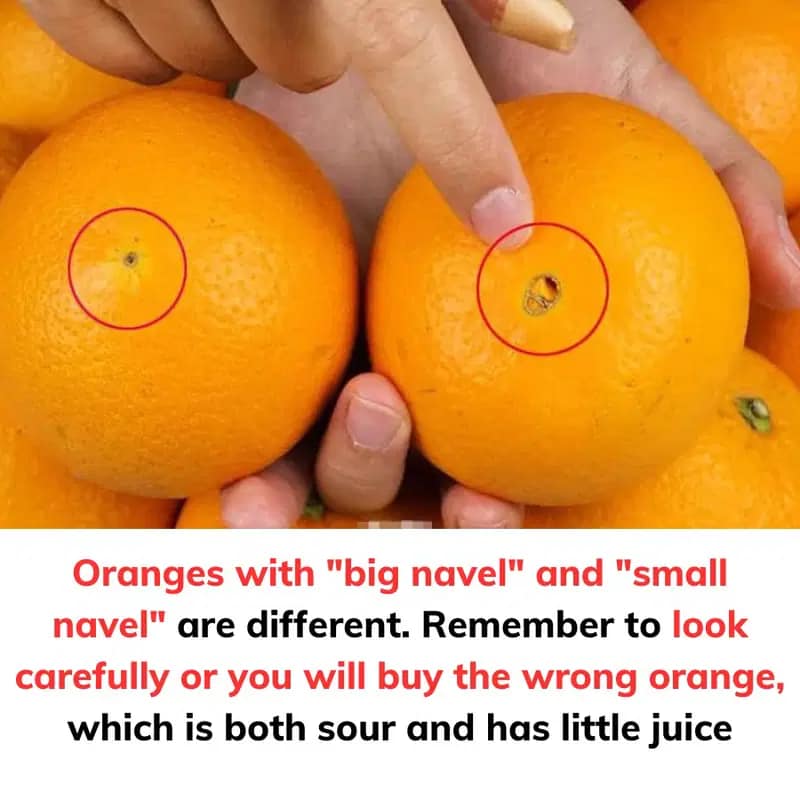When you walk through the produce aisle or browse a fruit stand at your local farmers’ market, the vibrant color and citrusy aroma of oranges are hard to resist. But not every orange is created equal. Some are bursting with sweet, juicy flavor, while others are disappointingly bland or overly watery. So, how do you ensure you’re picking the best orange every single time? Believe it or not, the answer lies in a small, often-overlooked detail: the navel. Yes, that little indentation at the base of the fruit holds the key to unlocking the perfect orange. Let’s dive into the tried-and-true techniques for selecting oranges that are sweet, juicy, and utterly satisfying.

First and foremost, pay attention to the size of the navel. The navel is that small circular mark, often resembling a belly button, located on the bottom of the orange. As counterintuitive as it might seem, smaller navels are typically a sign of a sweeter orange. Larger navels often indicate that the fruit contains more water, which can dilute its natural sweetness and leave you with a slightly bland experience. When you’re choosing oranges, opt for those with smaller navels if you’re looking for a punch of sugary citrus flavor.
Next, observe the shape around the navel. The area surrounding the navel can tell you a lot about the fruit’s freshness and juiciness. Ideally, you want an orange with a round, firm area near the navel. A fruit with a tight, plump shape indicates that it’s well-hydrated and filled with juice. On the other hand, if the area feels sunken, wrinkled, or overly soft, the orange might be past its prime or lacking in juiciness. A healthy, well-formed navel zone is one of the best visual cues for quality.
Now let’s talk about weight. This is one of the oldest tricks in the book when it comes to selecting citrus fruits, and for good reason. Heavier oranges are usually the juiciest because they contain more liquid inside. When you pick up an orange, it should feel dense and firm for its size. If it feels light or hollow, it’s probably dried out inside or lacking the rich juiciness that makes oranges so delightful. Don’t be afraid to pick up a few different oranges and compare their weights—it’s an easy but effective method for finding the perfect one.
Equally important is the skin texture and color. A high-quality orange typically has smooth, vibrant, and slightly glossy skin. Pay special attention to the area around the navel. It should look clean and unblemished, free of any mold, soft spots, or strange discolorations. While some minor blemishes are natural and don’t always affect taste, overly thick or puffy skin can indicate that the fruit is less juicy. Likewise, oranges with overly dry or shriveled skin might have already started losing their moisture and freshness. Your best bet is an orange with bright, uniform color and taut, smooth skin.
But why does the navel matter so much, and what’s its role in an orange’s flavor profile? The navel is actually a second, undeveloped fruit that forms inside the main orange. The smaller and tighter the navel, the better the fruit tends to taste because it suggests a more balanced growth process and optimal sugar concentration. Oranges with overly large navels often have an uneven distribution of juice and flavor, which is why they sometimes taste watery or dull.
Beyond the navel, seasonality also plays a role. Oranges are generally at their best during peak growing seasons, which vary slightly depending on the variety. Navel oranges, for example, are typically in season from late fall through early spring. Shopping during peak season gives you a much higher chance of finding oranges that meet all the criteria: small navels, firm skin, and satisfying weight.
Another helpful tip is to trust your senses. A good orange should smell fragrant and citrusy, even through its skin. If an orange doesn’t have any scent, it might lack flavor as well. While scent isn’t always foolproof, it’s often a reliable hint at what’s inside.
Once you’ve selected your perfect oranges, make sure to store them properly. While they can be kept at room temperature for a few days, refrigerating them will extend their shelf life and keep them fresh longer. And when it’s finally time to eat or juice your oranges, all the effort you put into selecting them will pay off with every sweet, tangy bite.
In conclusion, choosing the perfect orange isn’t about luck—it’s about knowing what to look for. By focusing on the size and shape of the navel, checking the weight, observing the skin texture, and relying on your sense of smell, you’ll be well-equipped to pick the juiciest, most flavorful oranges every time. So, the next time you’re standing in front of a pile of oranges, don’t just grab the first one you see. Take a moment, inspect that navel, feel the weight, and trust the process. With these tips in mind, you’ll never settle for a mediocre orange again. Instead, you’ll enjoy every slice, sip, or zest of this citrus delight to the fullest.





